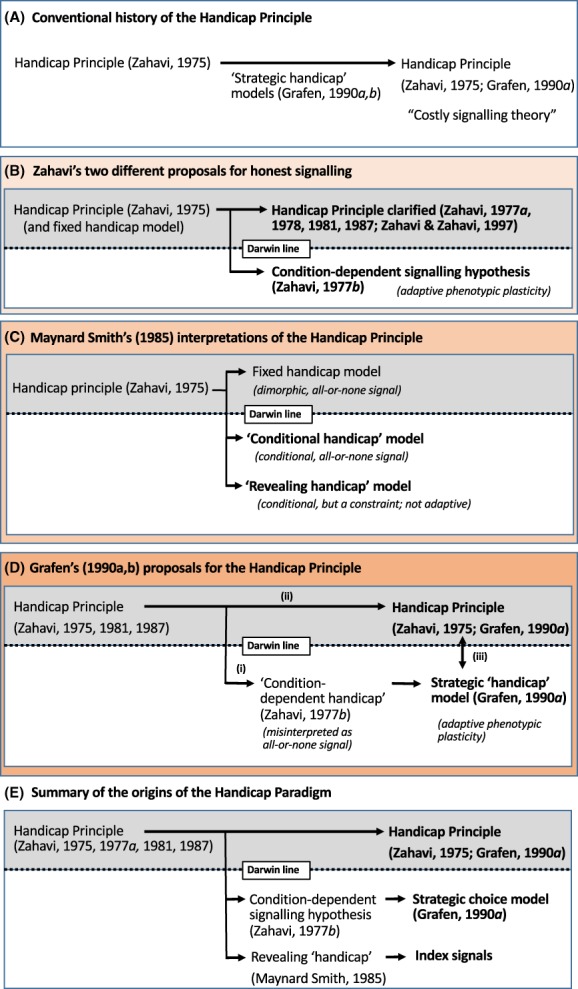Figure 3.

Different perspectives of the theoretical development of the Handicap Principle. (A) The conventional view is that Zahavi's (1975) handicap hypothesis and his broader claims for the Handicap Principle were validated by Grafen's (1990a) ‘handicap’ model. (B) After Zahavi's (1975) original proposal was criticized, he clarified his arguments for his Handicap Principle, which all defy Darwinian logic (dark shading). At the same time, Zahavi (1977b) also proposed another hypothesis (condition‐dependent signalling) that is logical and consistent with evolutionary biology (no shading). The ‘Darwin line’ emphasizes this crucial distinction between these proposals, which has not been previously recognized. (C) Maynard Smith (1985) reviewed three different models of good‐genes sexual selection, which he assumed were all models of the Handicap Principle. These were based on different proximate mechanisms and functions (fixed versus plastic expression and constraint versus functional), and he overlooked that two of these models were logical and Darwinian (light shading). (D) Grafen (1990a) provided a model of (i) Zahavi's (1977b) condition‐dependent ‘handicap’ hypothesis, and he concluded that his model; (ii) validates; and (iii) is equivalent to Zahavi's (1975, 1981, 1987) Handicap Principle. (E) An historical overview reveals how the Handicap Principle became a confusing mixture of Zahavi's handicap proposals, which are contrary to Darwinian logic (dark shading), and other ideas that are logical and consistent with evolutionary biology (no shading).
